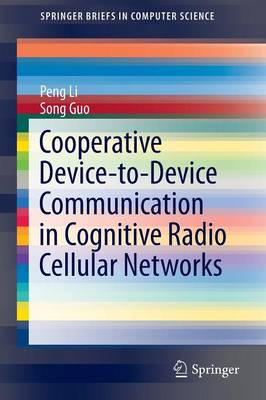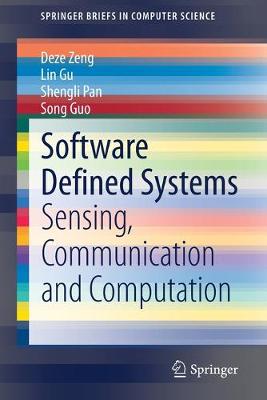SpringerBriefs in Computer Science
2 total works
Cooperative Device-to-Device Communication in Cognitive Radio Cellular Networks
by Peng Li and Song Guo
Published 1 January 2014
This brief examines current research on cooperative device-to-device (D2D) communication as an enhanced offloading technology to improve the performance of cognitive radio cellular networks. By providing an extensive review of recent advances in D2D communication, the authors demonstrate that the quality of D2D links significantly affects offloading performance in cellular networks, which motivates the design of cooperative D2D communication. After presenting the architecture of cooperative D2D communication, the challenges of capacity maximization and energy efficiency are addressed by optimizing relay assignment, power control and resource allocation. Furthermore, cooperative D2D communication is enhanced by network coding technology, and then is extended for broadcast sessions. Along with detailed problem formulation and hardness analysis, fast algorithms are developed by exploiting problem-specific characteristics such that they can be applied in practice.
This book introduces the software defined system concept, architecture, and its enabling technologies such as software defined sensor networks (SDSN), software defined radio, cloud/fog radio access networks (C/F-RAN), software defined networking (SDN), network function virtualization (NFV), software defined storage, virtualization and docker. The authors also discuss the resource allocation and task scheduling in software defined system, mainly focusing on sensing, communication, networking and computation.
Related case studies on SDSN, C/F-RAN, SDN, NFV are included in this book, and the authors discuss how these technologies cooperate with each other to enable cross resource management and task scheduling in software defined system. Novel resource allocation and task scheduling algorithms are introduced and evaluated.
This book targets researchers, computer scientists and engineers who are interested in the information system softwarization technologies, resource allocation and optimization algorithm design, performance evaluation and analysis, next-generation communication and networking technologies, edge computing, cloud computing and IoT. Advanced level students studying these topics will benefit from this book as well.
Related case studies on SDSN, C/F-RAN, SDN, NFV are included in this book, and the authors discuss how these technologies cooperate with each other to enable cross resource management and task scheduling in software defined system. Novel resource allocation and task scheduling algorithms are introduced and evaluated.
This book targets researchers, computer scientists and engineers who are interested in the information system softwarization technologies, resource allocation and optimization algorithm design, performance evaluation and analysis, next-generation communication and networking technologies, edge computing, cloud computing and IoT. Advanced level students studying these topics will benefit from this book as well.

